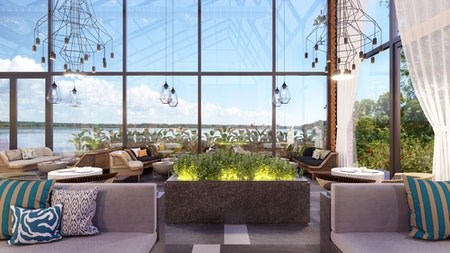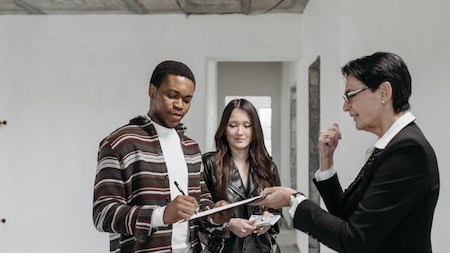Virtual online home tours are gaining an audience and are effectively being used to attract buyers, particularly to high-end homes and new developments. They also serve a niche of buyers who may be unable to travel long distances but need to relocate to, or buy, a property in a different province or country.
There are also some people, regardless of Covid-19 precautions and compliances, that are still not willing to physically view a property. Homes, as a result, are being sold online globally and decisions to rent are also being made based purely on the quality of a virtual viewing.
What is a virtual tour?
Virtual tours are not the same thing as a video walkthrough. Virtual tours allow prospective buyers to interact at their own pace, whereas a video follows a guided path. Interactive means the viewer can explore, backtrack, and have a 3D view of the home space. They give a sense of what it ‘feels’ like to ‘stand’ inside the property, in effect duplicating the experience of a physical viewing.
While it might appear that this type of cutting-edge technology has changed the way real estate is marketed, it does come with as many challenges as there are benefits.
Advantages
Virtual tours appeal to a vast number of potential buyers and help agents to reach a broader audience. It’s also a great way to boost content creation strategies and establish an online branding presence, and thus can make an agent/agency stand out against competitors. One of the most significant advantages is that potential buyers can gain a realistic idea of many homes in a short space of time, helping them eliminate or change items on their checklist.
Disadvantages
It’s risky buying real estate without a physical viewing. Firstly, buyers aren’t really exposed to any problems or imperfections that may exist obviously because virtual viewing aims at making a home look attractive. Buyers are also not exposed to the neighbourhood nor have an understanding of the street in which the house is sited; neither can they assess noise or other unsightly distractions. Bad lighting can take away from any impact, which is why professionals typically provide this type of service.
Debatably one of the biggest disadvantages for agents is that they are not necessarily given an opportunity, after a first virtual viewing, to discuss the merits of a home and how a renovation might easily cater to the checklist of the potential buyer. It’s a hit-and-miss scenario and the cost factor to produce one is a big negative.
How does it work?
Bear in mind that the virtual tour uses actual footage of the home: it is not a digital recreation, and therefore must have a very high standard of quality. Essentially 360 degrees photos, taken by professional photographers using specialised cameras throughout the home, are stitched together so that an online viewer can ‘turn’ 360 degrees in any room and move to a specific location within a property. Viewers are therefore self-guiding, which not only improves the virtual experience but encourages them to immerse longer in the home and gain a sense of space and the flow of the layout.
The ‘filming’ can take hours, as does the production and editing process to ensure a stunning virtual tour. Still it’s worth the time, effort and cost if you can successfully market the virtual tour on websites and across social media platforms. It creates a powerful impression of tech-savvy agents/agencies willing to go the extra mile beyond their competitors.
Private Property has already tapped into the potential and strength of virtual tours by making available virtual tour podcasts such as The Show house and The Home Shopper Show. Take a tour and be pleasantly surprised.
Things to consider
- Research by some of the top global virtual home tour producers indicates that virtual tour users are spending more time on balconies and patio’s indulging in views. They also tend to focus on lighting, which plays an important role in judging a space’s size, shape and overall. Kerb appeal is being tagged as an oft-forgotten aspect of the virtual tour, and if budget allows, a drive through the suburb is a plus.
- Another way to enhance a virtual viewer’s experience is to offer the ability to switch between 2D and 3D views, and use this to a sales advantage: you reference a particular point in a video that the user can navigate to, and thus expose them to a feature or highlight something.
- A virtual tour should also be accessible through a variety of different platforms and devices and optimised so that they load and work seamlessly with the best possible resolution.
- The opening sequence of images is also one of the most important factors to consider, and this really should start with a view from the street. Not only will the viewer have a sense of what it feels like to arrive at the residence, but they can also gauge how guests will feel.
- A great sales angle with a virtual viewing is to be simultaneously online through screen-sharing (for example, on Zoom) with a potential buyer as they navigate through the property. Here you can draw their attention to features and tackle any hesitations around a perceived negative feature. The client will have the sense that you are walking with them; it’s the next best thing to a physical showing because it is in real-time.
- Don’t overlook opportunities to present unique features of a home during a virtual tour. This includes suggestions that the viewer moves to a specific area and look out of a window, for example. This is important because it helps to create memories of the viewing. It also assists in presenting the personality of a home, its grounds, and again the sense of space.
- Track and analyse the clickthroughs so that you can draw conclusions about the virtual tour. If you are able to do so, ask viewers what they did or didn’t like about the overall experience.
The future
Virtual tours are the future for selling properties. It’s set to globally change the industry especially with forthcoming additional simulations of tastes and smells. Even virtual touch technology is on the cards so that viewers can feel the textures of walls and surfaces. If a virtual tour really resonates with a potential owner or even just casual viewers, they’ll be quick to recommend your business.





